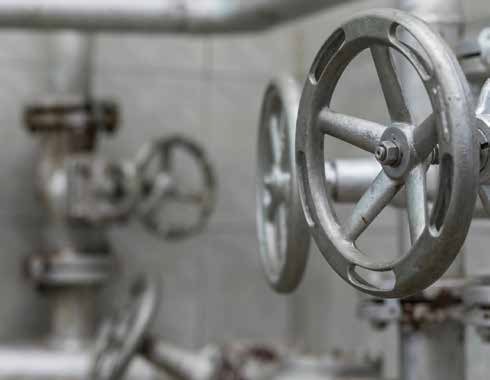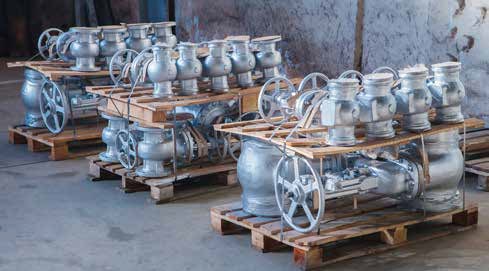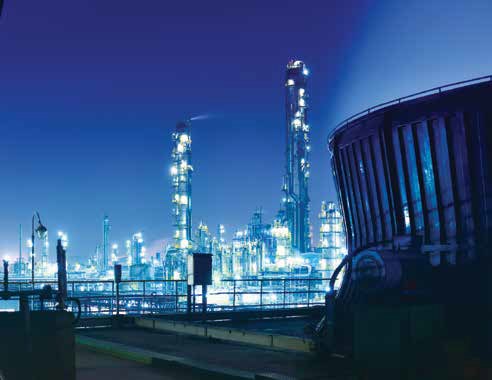Products made from chemicals support several industries, but also everyday life in several ways. In your own house, from your appliances, to your paint, to your furniture, chemical processing played an integral part in getting those products there. Chemicals also support personal care products, connective technology, help save energy, entertainment and equipment, and even more.1
Chemical companies process raw materials such as crude oil biproducts into more refined products. Crude oil has a tremendous impact on the chemicals industry because many plastics and polymers are manufactured from derivatives of crude oil. It is also probably no surprise that the chemical industry itself is the largest purchaser of chemical products and facilities are often located near other facilities, allowing for easy transport of chemicals. To that end, these materials must be transported in a safe and reliable manner from one location to the next.2

Actuators and Control
An actuator is used to automate valves so that human interaction and decision making is limited for proper actuation, or movement of the valve. The actuator can use air, hydraulic fluid, or electricity to power, often referred to as pneumatic, electric actuators (or electro-hydraulic for chemical pipeline).
For optimal performance of an actuator, consider these takeaways:
• Precise, repeatable positioning typically better than 0.15% of span.
• The ability to start and stop instantaneously without dead time or position overshoot.
• Continuous duty rating without limitations on the number of starts per minute.
• Perform consistently and unaffected by load.
• Rugged industrial design capable of operating in difficult environments without an effect on performance.
• Minimal periodic maintenance required.3

Valves and Chemicals
Valves are critical in the movement of products through a piping system while controlling flow, protecting equipment and providing safety in emergency shut off situations. Using just any valve in the chemical industry could wind up putting operators and the environment at risk. When selecting a valve for a chemical application, consider these takeaways:
• Choose valves that have been designed based on flow requirements needed to meet safety standards.
• Will the valve provide accurate flow control?
• Choose a valve designed to meet process requirements such as temperature and pressure.
• Is the valve capable of meeting allowable leak definitions for fugitive emissions?
• Will it prevent leakage of potentially hazardous material?
For valves regulating flow, there are several kinds to choose from. Globe valves contain spiral channels, which has high friction. Because of this, they have limited capability to regulate specific types of flow, unless they are viscous liquids. Gate valves have a metallic gateway, which can open and close. Due to this simplistic design, they also have limited flow control, as it is limited to either allowing flow or stopping it. Ball valves have a metallic ball in the center, and can offer bi-directional flow. This allows them to have a higher amount of flow than many other kinds. Check valves limit backward flow, with internal mechanisms that can help control flow, but are not ideal for high pressure or fast flowing liquids. Finally, butterfly valves include horizontal rotary motion, to allow or stop flow, with a paddle in the center. Butterfly valves are often used in the chemical industry because they can regulate flow of gas, liquids, and sometimes semi-solids.3
Additionally, we can narrow our focus to be more specific regarding valves and flow control to look at control valves as a key component of accuracy of process control. Control valves are designed to operate for the purpose of controlling various process conditions. Control valves work by either fully opening or closing, or somewhere in between to respond to a design and operating criteria. Control valves are typically designed to operate using signals programmed to a specific set point to meet process demands. Control valves consist of three main parts: the actuator, positioner, and body. There are many types and designs used based on the application.4
The use of chemicals is a precise process. Control valves must perform to exacting standards and meet all requirements and regulations. Control valves are used to add specific amounts of chemicals to another set of chemicals at exacting levels. In many industrial processing applications, control valves can be found operating in harsh environments. The valves are designed to handle all types of hazardous conditions while meeting or exceeding ASME B16.34 or other specifications. The proper and effective construction of these valves is very important relative to the intended performance and operation as part of the process applications.4
Control valves are found in but not limited to these industries:
• Chemical
• Refining
• Petrochemical
• Biofuels
• Food and beverage processing
• Mining
• Nuclear power
• Oil and gas processing
• Pharmaceutical
• Pulp and paper
Beyond valve selection, materials must also be considered. There are strict safety standards, depending on the flow media, for material selection. If a material is reactive with chemicals that will be exposed to the valves, it could be a safety and environmental hazard. Materials must also be chosen that will outstand extreme temperatures or varying pressures.5

REFERENCES
5. https://www.pumpindustry.com.au/selecting-valves-considerations-by-industry-and-application
ABOUT THE AUTHOR


